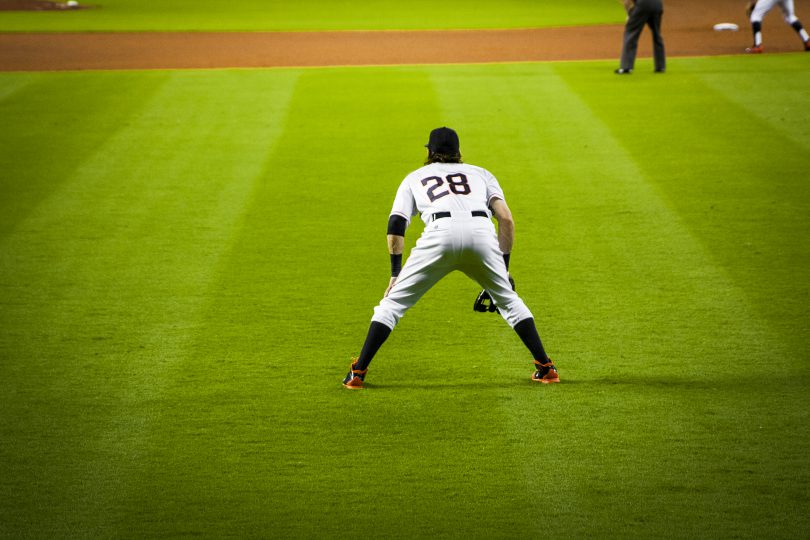If you are a position player looking to make a recruiting video, we have the perfect resource for you! While the article below will provide you with an overview of the information you need, our new online course, Creating a Successful DIY Recruiting Video, walks you through the process of creating a quality recruiting video and sending it out to college coaches from start to finish. The course provides information and insight from college coaches on:
- What to include in your video
- How to film your video
- How to appropriately incorporate measurable data into your video
- How to edit your video for maximum impact
- How to leverage your video to get recruited
Best of all? The course is FREE. Enroll today by clicking the button below!
Not interested? Read the overview article below.
As part of our 2017 College Coaches Survey, we asked 24 college coaches from every level of college baseball questions about recruiting and video. While video was useful to all of the coaches, 25% said they would commit a player having only seen video. In our 2018 survey, that percentage jumped up to 67% with another 22% unsure and only 11% giving a hard “no”. Again in 2019, only 20% of coaches answered "No". Simply put, having a skills video is a must in today’s day and age. If you need proof, take a look at players getting real college interest just by posting a short video on Pitching Ninja's hitting platform on Twitter (@FlatgroundBats). Like it's pitching counterpart, @FlatgroundApp, Flat Ground Hitting has quickly become a way for position players to get free, meaningful exposure.
As we’ve explained before, making a skills video doesn’t have to be expensive or fancy. A smart phone and a teammate can get the job done. If you have access to a radar gun, even better! Don’t worry about how well you can edit the video, coaches don’t care. It’s what’s included in the video that can really help you get recruited. Coaches want to see a glimpse of your mechanics, skills, and athleticism. They also almost universally say keep it short and forget the tacky background music. We asked the coaches who took part in our survey what they wanted to see on a recruiting or skills video. If you missed it, here is what they said they want to see on a pitcher’s recruiting video. When it comes to position player videos, there was also a lot of agreement. Here are the essentials of what college coaches want to see in your position player video (which should be no more than 3 minutes long):
Hitting (open side view): Show 5-7 swings from the open side (camera shooting from 1stbase side for righties and 3rd base side for lefties), preferably off of someone throwing overhand batting practice. If you do not have access to a batting cage or field, swings off of a tee or soft-toss are better than nothing.
Hitting (behind the hitter view): If possible and safe, show an additional 5-7 swings from behind home plate. Make sure it is safe before you consider doing this.
Running: On the final swing of your behind hitter view round, run a hard 90 through first base. Make sure the base is visible and that the video is in real time. Coaches can use their stopwatch to determine the time. 60 yard-dash videos, the usual baseball running test, is often not worth including because there is no way to show in video that your 60 yards is in fact 60 yards, but coaches like to see video of how you look when you run.
Fielding
For Infielders
Middle infielders take grounders from shortstop and throw to 1st base. Corner infielders take grounders at their respective positions, with 3B throwing to 1st base and 1B throwing to 2nd base.
Show yourself taking two grounders right at you, two grounders to your forehand, two grounders to your backhand, and one grounder charging in on a slow roller (not necessary for 1st baseman).
Coaches are often split in whether they want to see the whole throw to a base or just the throwing mechanics. We suggest including a wide view with the throw in it, as long as the fielding actions are still easily visible in the video. If your video quality isn’t good enough for both, defensive actions should take priority over the entire throw.
For Outfielders
Show yourself making 3 throws to 3rd base and 3 throws to home plate from right field on a ball rolling or bouncing to you with no cutoff man. (Throws hard and on a line are better than long and loopy throws)
For Catchers
Catchers should show 2-3 clips of receiving the ball and throwing down to second from a view behind the catcher with the flight of the ball and 2-3 clips from the first base side focusing on the receiving and throwing mechanics. This will give coaches a view of arm strength and ability to calculate pop-time, as well as a close up of mechanics. In game receiving and throwing film is helpful as well.
Game Footage: Not all coaches love game film, but as long as you keep your video under 3 minutes, you can include several game at bats and several defensive plays at the end. In game film can be particularly helpful for catchers (just a few clips of receiving and preferably receiving and throwing). Another quality option is to let interested coaches know that you have game footage and ask them if they would like to see it and have it prepared and ready to send over if they say yes.
Verifiable information: Verifiable information is always preferred by coaches. When possible, you should provide coaches with video that allows them to get the information they need to make an evaluation, for example if you have a radar gun that you can include in frame to show your arm strength, or catchers pop times from behind that allow them to see catch to tag at second. If you have exit velocity readings or Trackman/HitTrax/Rapsodo data, include it. 35% of coaches we asked in 2019 said they were either "occasionally" or "always" using advanced metrics in their recruit evaluations for pitchers (spin rate, spin axis, etc.) and 40% said the same about hitters (launch angle, exit velocity, attack angle, bat speed, etc.).
While no one can guarantee that an effective video will get you into the school of your dreams, a good video may help coaches see you as a skilled, organized, and serious player worth a second look. In today’s recruiting process, video is a must, so find your teammate, a smart phone, and get to work!
Disclaimer: Following our tips is not a guarantee that you will find a college baseball team to play for. Recruiting videos are always best when they complement good grades, skills that match college standards, and quality references.







